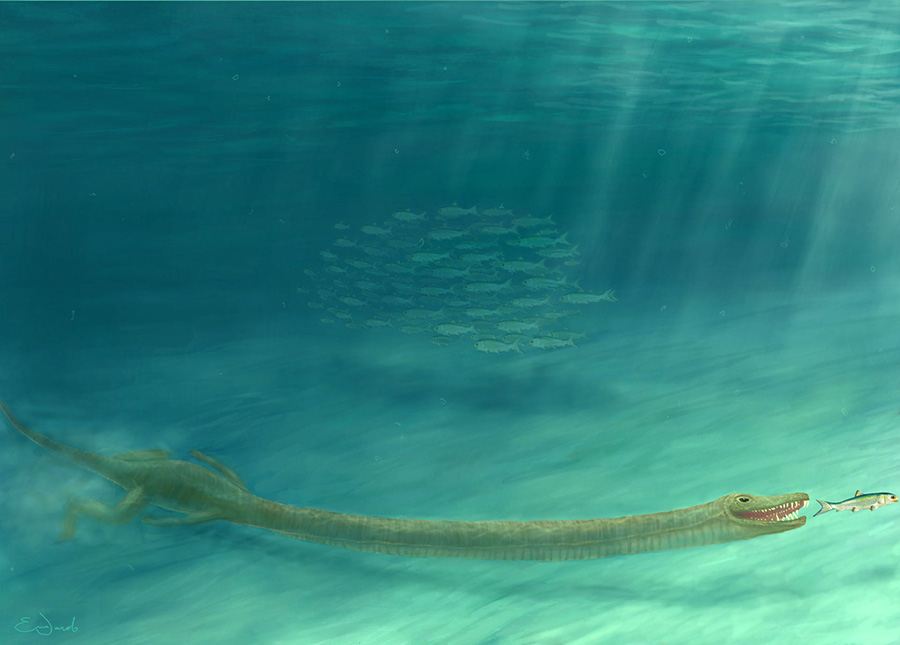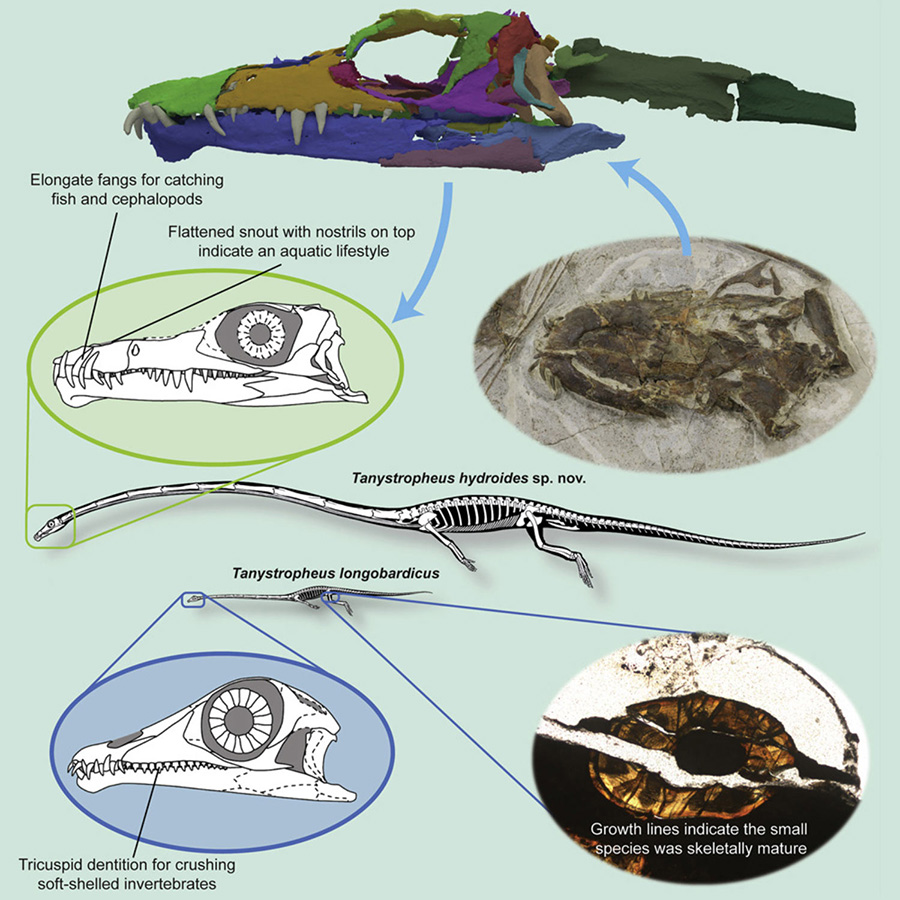Tanystropheus hydroides: Triassic Aquatic Reptile Had Extraordinarily Long Neck

Tanystropheus hydroides, the newly-described species of reptile that lived 242 million years ago (Triassic period), was about 6 m (20 feet) long, with the neck making up half of that length — three times as long as its torso.
One of the most remarkable Triassic reptiles, Tanystropheus is characterized by an extraordinarily long and stiffened neck that is almost three times the length of its torso, despite being composed of only 13 hyper-elongated vertebrae.
It was first described as a single species, Tanystropheus longobardicus, in 1852, and it’s been puzzling paleontologists ever since.
For a long time, scientists weren’t sure whether this reptile lived on land or in the water. Its bizarre body didn’t make things clear one way or the other.
“Tanystropheus looked like a stubby crocodile with a very, very long neck,” said Dr. Olivier Rieppel, a paleontologist at the Field Museum.
In the same region where many of the big Tanystropheus fossils were found, in what’s now Switzerland, there were also fossils from similar-looking reptiles that were only about 1.2 m (4 feet) long.
So not only were scientists unsure if these were land-dwellers or marine animals, but they also didn’t know if the smaller specimens were juveniles or even a separate species.
To solve these two long-standing mysteries, Dr. Rieppel and colleagues used newer technologies to see details of the animals’ bones.
The large Tanystropheus fossils’ skulls had been crushed, but the researchers were able to take CT scans of the fossil slabs and generate 3D images of the bone fragments inside.
The skulls had key features, including nostrils on top of the snout like a crocodile’s, that suggested Tanystropheus lived in the water.
It probably lay in wait, waiting for fish and squid-like animals to swim by, and then snagged them with its long, curved teeth. It may have come to land to lay eggs, but overall, it stayed in the ocean.

“That neck doesn’t make sense in a terrestrial environment. It’s just an awkward structure to carry around,” Dr. Rieppel said.
To learn whether the small specimens were juveniles or a separate species, the scientists examined the bones for signs of growth and aging.
“We looked at cross sections of bones from the small type and were very excited to find many growth rings. This tells us that these animals were mature,” said Dr. Torsten Scheyer, a paleontologist at the University of Zurich.
The authors named the larger species Tanystropheus hydroides. The small form bears the original name Tanystropheus longobardicus.
“The small species likely fed on small shelled animals, like shrimp, in contrast to the large species which ate fish and squid,” said Dr. Stephan Spiekman, a paleontologist at the University of Zurich.
“We expected the bizarre neck of Tanystropheus to be specialized for a single task, like the neck of a giraffe. But actually, it allowed for several lifestyles.”
“For many years now we have had our suspicions that there were two species of Tanystropheus, but until we were able to CT scan the larger specimens we had no definitive evidence. Now we do,” said Dr. Nick Fraser, keeper of natural sciences at National Museums Scotland.
“It is hugely significant to discover that there were two quite separate species of this bizarrely long-necked reptile who swam and lived alongside each other in the coastal waters of the great sea of Tethys approximately 240 million years ago.”
The team’s paper was published in the journal Current Biology.
_____
Stephan N.F. Spiekman et al. Aquatic Habits and Niche Partitioning in the Extraordinarily Long-Necked Triassic Reptile Tanystropheus. Current Biology, published online August 6, 2020; doi: 10.1016/j.cub.2020.07.025
Source: www.sci-news.com/








